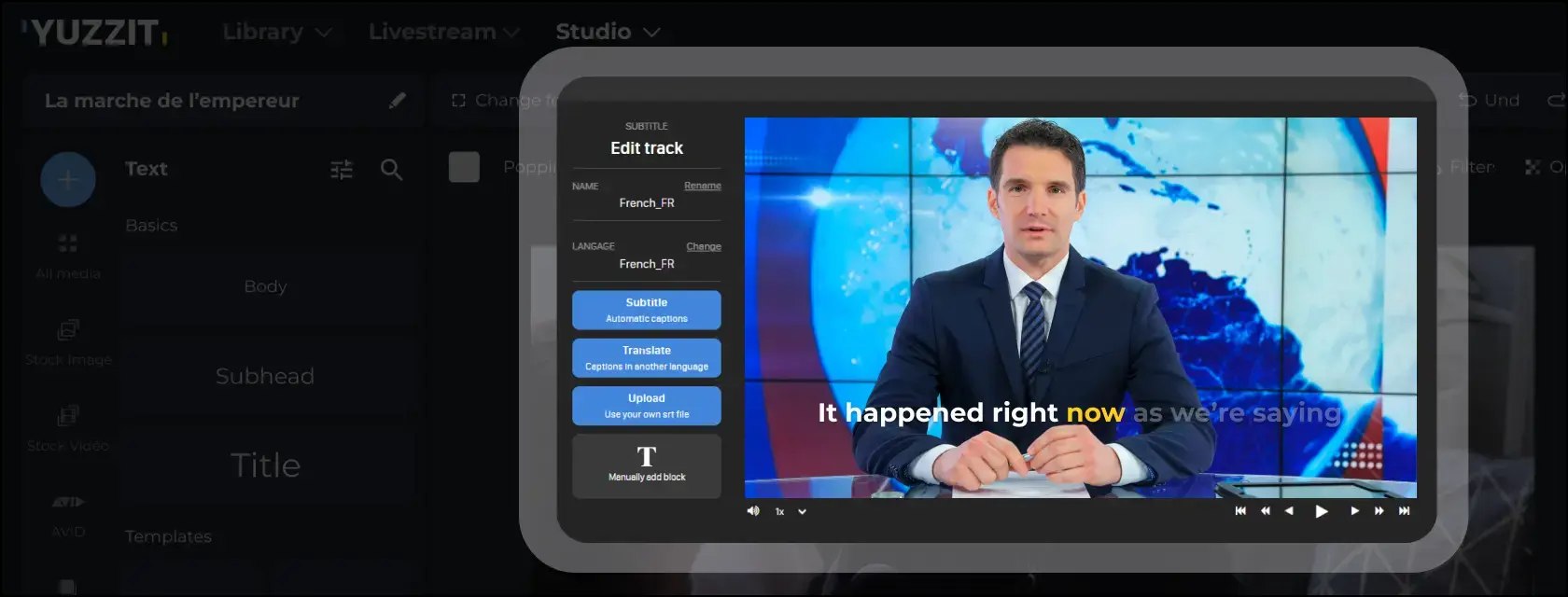Collaborative workflow: working efficiently on a video project with remote teams

Editing a video with several people can quickly become complicated. Between the multiplication of versions, the circulation of heavy files and the scattering of feedback by e-mail, confusion can quickly set in.
Fortunately, tools exist to make collaborative video editing simple and effective, even with remote teams. They centralize everything: versions, comments, access rights, organization. Everyone can move forward without blocking the others.
Find out in this article how to structure a smooth video collaboration workflow, and how solutions like Yuzzit really make life easier for teams.
Signs that you need to switch to collaborative video editing
Scattered teams, but common projects
Today, teams are no longer all in one place. Some work remotely, others in hybrid mode. Yet they still have to produce videos together, often to tight deadlines.
If you recognize yourself in this scenario: an editor in Lyon, a project manager in Paris and a customer in Montreal... then you already know how difficult it is to keep everyone aligned without a dedicated tool.
The limits of classic sharing
Another telltale sign is that you're still juggling heavy files sent by e-mail. Each transfer takes time, and nobody's sure they're working on the right version. You may store your videos on external hard drives, but that doesn't solve the problem when you need to collaborate remotely.
These situations show that it's time to adopt a collaborative video workflow. By centralizing everything: versions, comments, access and storage, you gain clarity and efficiency.
The pillars of an efficient collaborative video workflow
1. Version management in a video project
Who hasn't worked on a "final V12 version"?
With a collaborative video editing platform, every stage of the project is recorded and tracked. For example, the Yuzzit video editor allows you to track the progress of a clip through different validation states. You know immediately whether a video is being edited, awaiting feedback or ready for publication. This visibility prevents misunderstandings and speeds up decision-making.
2. Review and comment tools
E-mail feedback is often unclear. Where should I cut? Which sequence should be modified?
With online video editing with comments and reviews, anyone can annotate the video directly. Feedback is precise and easy to process.
3. Managing video access rights
Not everyone involved in a project has the same needs.
- A fitter needs to be able to cut and assemble.
- A manager must validate.
- A customer only needs to view the video.
An efficient collaborative video workflow allows these roles to be assigned without complexity. On Yuzzit, you can even divide up the tasks: one member of staff is responsible for cutting, another for adapting to different formats, and a final member for publishing the videos. Everyone has a clear responsibility and saves time.
And the solution goes even further, offering the possibility of generating a private, secure link to share the video with a manager or client. No need to wait for long transfers or fear intrusive advertising. Validation is quick and easy.
4. Cloud storage for video projects
Online storage is a game-changer. No need to transfer heavy files for each modification. Videos are centralized in a single space, accessible from anywhere.
With Yuzzit, your videos are stored in an organized library. You can easily find past content, clips ready for broadcast or projects in progress. This is a real asset when several teams are working in parallel on different formats.

Cloud or local: what's best for your video projects?
For a long time, video editing was only done locally. Files were stored on a powerful computer or external hard drive. This method remains useful for very heavy, ultra-high resolution projects, or when a stable Internet connection is not guaranteed. But when it comes to sharing files with others, things get complicated. Transfers take time, and collaboration quickly becomes a hindrance rather than an asset.
Conversely, working in the cloud opens up new possibilities. Projects can be accessed anywhere, at any time, regardless of where team members are located. Remote video co-editing becomes natural: everyone can work on the same project without the risk of overwriting someone else's version. Feedback is provided directly in the interface, greatly simplifying online video review and annotation.
For hybrid or geographically dispersed teams, the cloud is often the best option. SaaS solutions like Yuzzit offer the ideal compromise: the flexibility of remote access, the security of private, ad-free hosting, and the speed needed to manage multiple projects in parallel.

How to set up your collaborative video workflow
Step 1: Define roles
Who goes up? Who validates? Who publishes?
A clearly organized audiovisual workflow avoids overlaps and oversights.
Step 2: Choose the right tools
A good tool must offer :
- version management,
- integrated comments,
- differentiated access rights,
- secure cloud storage,
- possibility of publishing directly.
Step 3: Establish best practices
- Always use the platform to centralize exchanges.
- Update video status (in progress, validated, published).
- Plan revision steps to keep up the pace.
These habits create an efficient team dynamic and reduce time wasting.

The benefits of a successful collaborative video workflow
A well-constructed collaborative video workflow offers a number of advantages. Firstly, it saves precious time: tasks are centralized and everyone knows their role, avoiding duplication or delays.
Comments integrated directly into the video reduce errors and make feedback clearer.
Visible validation status lets you know immediately where each project stands, without the need for endless exchanges.
Remote validation is also simplified thanks to fast, secure access.
Last but not least, an organized content library lets you find a video you've already produced in a matter of seconds.
In the end, editing becomes a smooth and enjoyable process, even when several people are working on it at the same time.
Switch to a assembly fluid collaborative video
A successful collaborative video workflow relies on good organization and the right tools. It's not just about editing a video, it's about creating an environment where everyone contributes effectively, without blockages.
If your teams work remotely, it's time to adopt a SaaS solution like Yuzzit. It simplifies every stage: cutting, validation, publication and archiving. You save time, reduce friction and get your videos out faster.
Frequently asked questions
What is collaborative video editing?
Collaborative video editing enables several people to work on the same video at the same time. Each member can add, modify or comment on sequences, which facilitates coordination and version tracking.
What tools should you use for a collaborative video workflow?
SaaS video-editing solutions like Yuzzit can be used to centralize storage, validations and remote co-editing. These tools simplify task sharing and online video editing.
How do you manage access rights in a video project?
Most collaborative platforms offer personalized access rights management. In this way, each member sees only what he or she needs to see, and can follow the progress of the project in complete security.






.webp)


